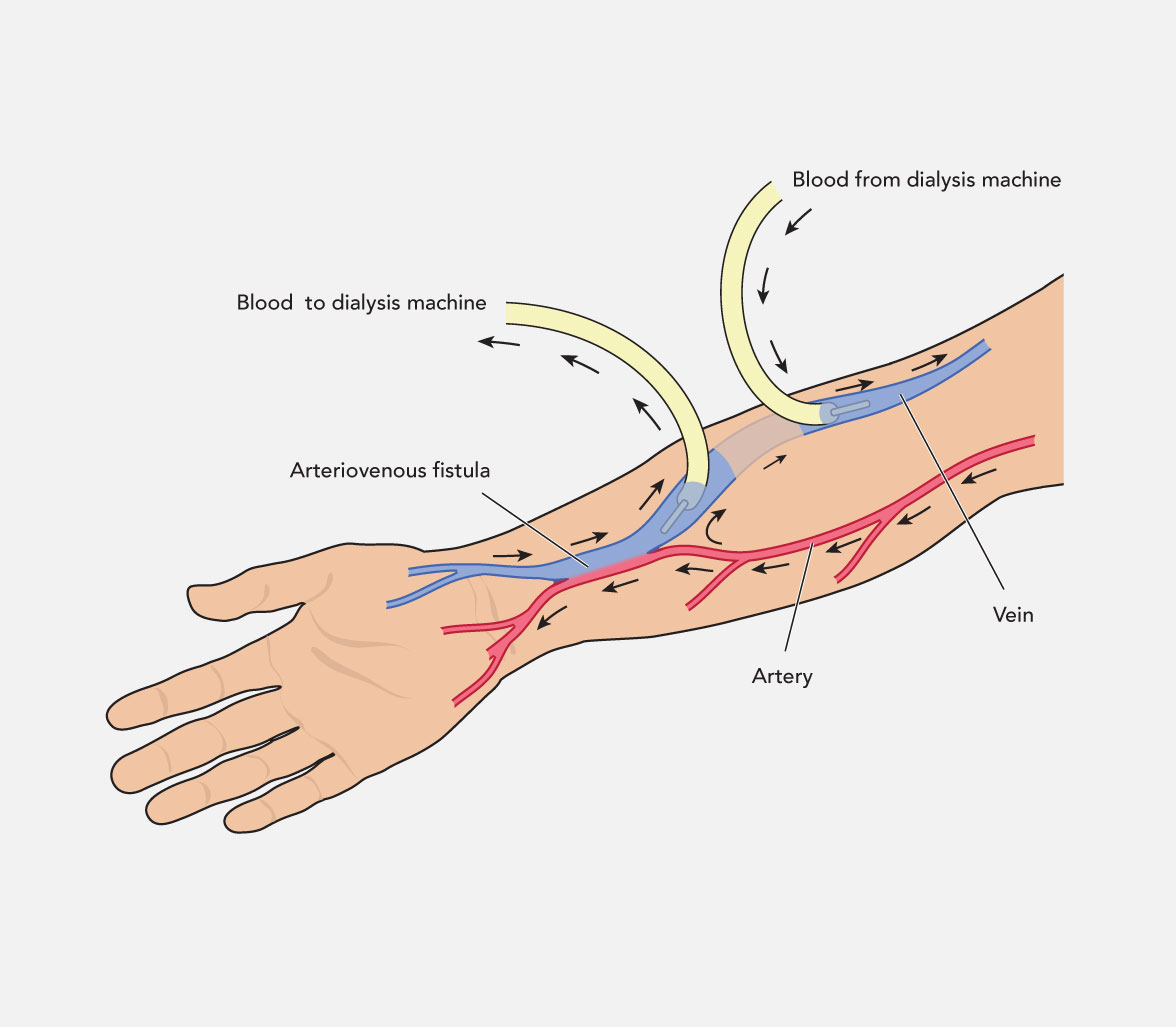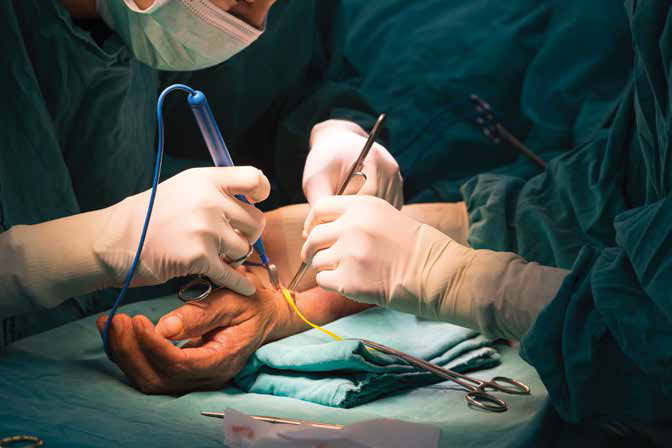Your lifeline to dialysis
An arteriovenous fistula (AVF) or vascular access is a surgically created site to obtain easy access to the blood circulation. It is situated just under the skin and is not exposed. The access site is usually on the arm and rarely on the thighs. This access enables blood to be withdrawn and re-infused safely, quickly and efficiently during dialysis.
Each time you have haemodialysis this access is used and is connected to a dialysis machine. One tube takes the blood to the dialysis machine to be filtered. Another tube returns the clean blood to your body. This process of taking blood to and from your body to the dialysis machine is repeated during a dialysis run.
There are three types of vascular access:
- A fistula
- A graft
- A dialysis catheter

- Usually, fistula is made in the arm that has the best blood vessels; if both arms have good blood vessels, it will be made on the non-dominant hand.
- A fistula can generally be used after 6-8 weeks and fully matured (as consented by your vascular surgeon) after being created.
- A haemodialysis graft takes approximately 2-3 weeks to heal in order to access.
- Some people call their fistula vascular access a lifeline because it makes dialysis possible.
- If you still have questions after reading this, consult with your doctor.

- Pay attention to any swelling. You will be instructed to keep your access arm elevated to reduce swelling and pain.
- Monitor your pain level. Your physician may also prescribe a painkiller to help alleviate any post-operative pain.
- Your access arm may be cool and numb in the beginning. This will reduce over time as your circulation gets used to the new fistula
- Swelling is normal and expected. To reduce swelling, elevate your arm when you are resting or sitting by putting it on 2 pillows at the same level of your heart.
- Regularly check that your fistula is working by placing your fingers on the skin of your fistula – you should feel a vibration (”thrill”).
- Attend your follow-up appointments.
- You may shower on the day of the procedure but please keep the dressing dry.
- Adhere to the dietary restrictions as advised by the doctor.
- Draw blood or measure blood pressure reading from your fistula arm.
- Avoid heavy lifting directly over your fistula.
- Drive for at least a week.
Contact your doctor immediately if you experience the following:
- Persistent bleeding at the site of incision even after applying pressure for 15 minutes.
- Chills or fever.
- Increase in pain, redness or pus from the incision site.
- Gaping at the site of the incision.
- Seriously injured or hurt your access arm.
- Severe pain that does not get better with medication.




